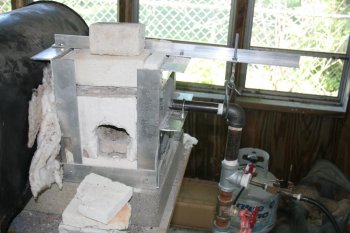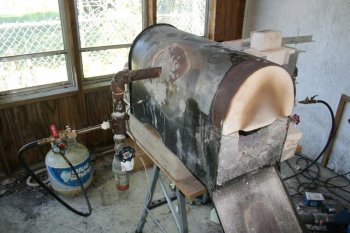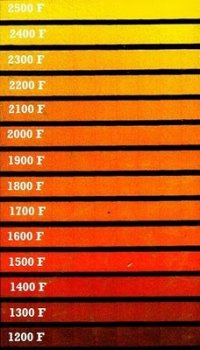Sorry for the length of this threat but thank you in advance for taking the time to read it 
I have a small loose brick furnace that I use to HT. It is a bridge style setup of fire bricks (obviously not good ones because they tend to crack after a couple times of using the forge. I use charcoal and have a pipe attached under that i connect to a hair dryer for air. It heats up to about 2000 F or a bit more if I get it right but it only have about 4"x4" area for the fire to work, I can make it bigger but the air flow would still maybe hit the middle. It's pretty darn makeshift and only cost me 40$ to make. I only have two settings on the hair dryer and that is the extent of the control i have over the heat, aside from the charcoal placement.
Whenever I HT my blades I tend to put them with the spine on a flame or both sides of the blade being hit equally by flames. I'm not sure whether this is good or not but I have never been successful at raising the heat without letting the flames touch, maybe it's because it was 2 4"x4" openings on either side of the forge to let my put me steel through.
Every time I HT I end up burning the blade and they get bubbles. This is a pain in the butt when it comes to re sanding everything especially if I have to hand sand to mirror finish before and after HT. What can I do differently?
If you guys need pictures of the blank and forge I can get them for you.
I have a small loose brick furnace that I use to HT. It is a bridge style setup of fire bricks (obviously not good ones because they tend to crack after a couple times of using the forge. I use charcoal and have a pipe attached under that i connect to a hair dryer for air. It heats up to about 2000 F or a bit more if I get it right but it only have about 4"x4" area for the fire to work, I can make it bigger but the air flow would still maybe hit the middle. It's pretty darn makeshift and only cost me 40$ to make. I only have two settings on the hair dryer and that is the extent of the control i have over the heat, aside from the charcoal placement.
Whenever I HT my blades I tend to put them with the spine on a flame or both sides of the blade being hit equally by flames. I'm not sure whether this is good or not but I have never been successful at raising the heat without letting the flames touch, maybe it's because it was 2 4"x4" openings on either side of the forge to let my put me steel through.
Every time I HT I end up burning the blade and they get bubbles. This is a pain in the butt when it comes to re sanding everything especially if I have to hand sand to mirror finish before and after HT. What can I do differently?
If you guys need pictures of the blank and forge I can get them for you.



